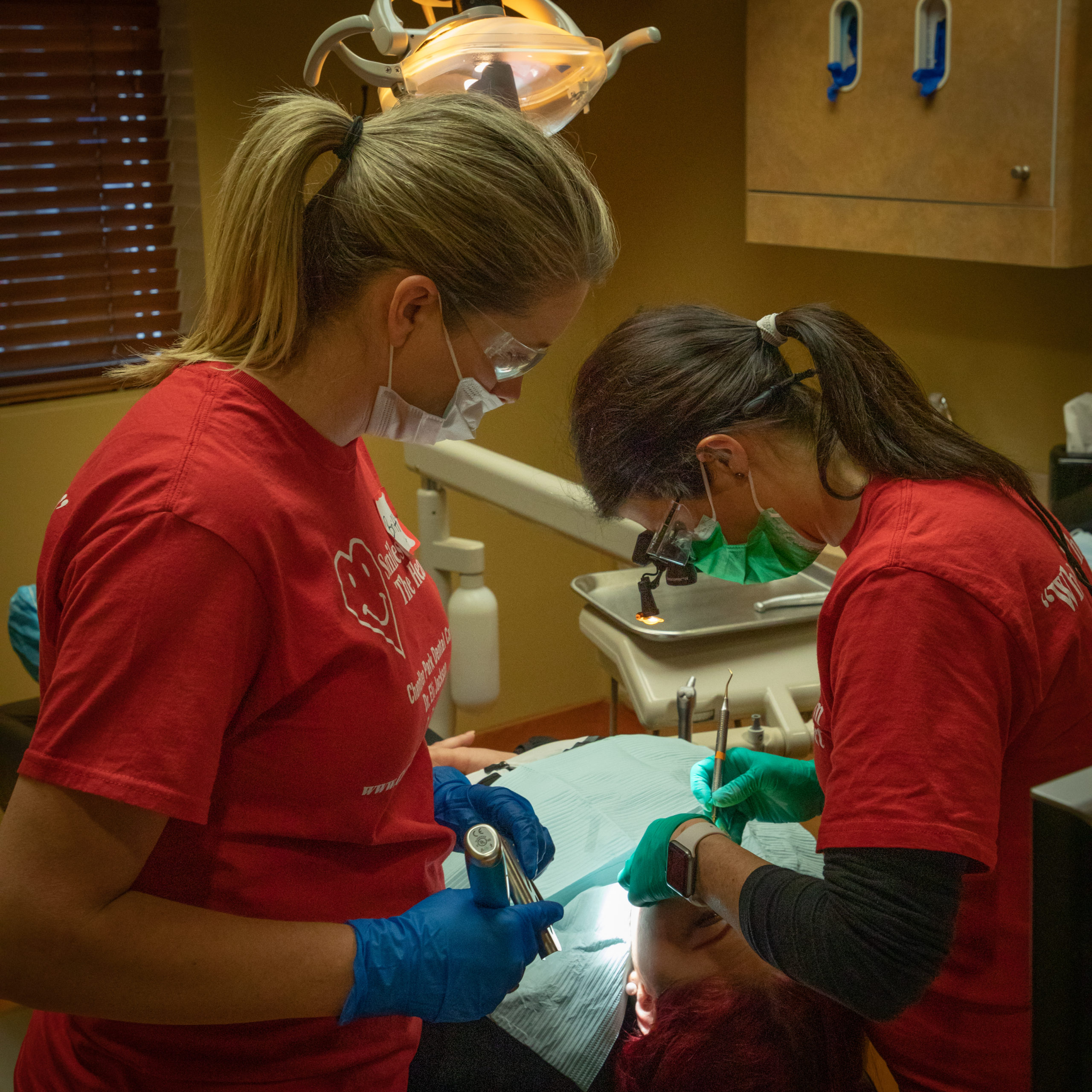What makes a great smile? Straight, white teeth, of course. But don’t forget about the gums. The size and shape of gum tissue can impact the overall look of a person’s mouth. Some opt for laser gum reshaping, a surgical procedure that can correct the gumline.
Gums that come down too low can create what’s sometimes called a “gummy” smile, where the teeth look small. High gums make teeth look longer and in some cases can expose the root. Or the gum line can be crooked and uneven, exposing different amounts of each tooth. Laser gum reshaping is a way to sculpt them into a shape that the patient prefers.
What is Laser Gum Reshaping?
Gum reshaping is sometimes called gum contouring, gingival sculpting, or gingivoplasty. It is dental surgery that either removes excess gum tissue or adds it on, depending on the needs of the patient.
When gums come down too low, a cosmetic dentist or periodontist trims away some of the gum tissue. For receding gums or a higher than normal gum line, they attach tissue from somewhere else—usually the upper palate.
Why You Might Need Laser Gum Contouring

Gum reshaping is usually done for cosmetic reasons. A patient, sometimes after having their teeth straightened, wants to complete their desired smile by adjusting their gum line.
Sometimes, however, a dentist might recommend laser gum reshaping for medical reasons.
Treating Periodontal Disease
Typical treatment for periodontal disease (also called gum disease) consists of deep cleaning procedures such as root planing and scaling and antibiotics. If those fail to work, the periodontist (gum specialist) may recommend pocket reduction surgery to close up areas where bacteria collects or regeneration therapy, which involves grafting gum tissue where it has deteriorated. Gum reshaping is typically part of both of these procedures.
Gingival Hyperplasia
Gingival Hyperplasia is an overgrowth of gum tissue, often accompanied by pain and redness. In some cases, the gum ends up covering most of the tooth, making it hard to clean and therefore susceptible to tooth decay and infections. It can be hereditary, caused by conditions like pregnancy, diabetes, or Crohn’s disease, or a side effect of certain medications such as antiseizure drugs or immunosuppressants.
When people stop taking these medications, or a medical condition is resolved, the gums often heal and return to their normal state. If they don’t, or if the patient has Hereditary Gingival Fibromatosis (HGF), the dentist might recommend laser gum reshaping surgery.
Ridge Augmentation
Missing a tooth can cause the jawbone to recede and deteriorate, causing the gum in that area to sink in. Ridge augmentation is a laser gum therapy that can fill in the sunken area with additional tissue. This is sometimes done in conjunction with placing a dental bridge or implant.
How Laser Gum Reshaping is Done

Laser gum surgery is a routine procedure that is done in a regular dentist or periodontist office. It starts with a local anesthetic to numb the gums. Using a high-powered laser or scalpel, the dentist will cut away the extra portion of gum tissue. Depending on the size of the cut, sutures may be required. If adding on to the gumline, small pieces of tissue are removed from the palate and attached along the top of the teeth.
The procedure takes approximately 1 to 2 hours, and patients report little if any pain, thanks to the anesthetics.
Before the introduction of laser technology for dentistry, gum surgery was done with a scalpel. Today, lasers are the preferred choice for several reasons. They offer a less invasive and more precise cut. The dentist is able to pinpoint the incision much better using laser instruments. There is also less bleeding and sometimes no need for sutures. This is because the laser not only makes the cut but cauterizes it at the same time. Finally, patients tend to feel less pain and have faster recoveries after laser gum reshaping.
Recovery and Healing After Gum Reshaping Surgery
Depending on the amount of gum tissue affected with laser gum reshaping, recovery can take a few days to a few weeks. Immediately after the procedure, there is typically some pain and tenderness. This can be helped with over-the-counter or prescription pain medications. Regular aspirin is not recommended. It can increase bleeding which will interfere with the healing process. A cold compress can be soothing for the pain too.
In the days after surgery, the patient should stick to soft foods. The dentist may have specific recommendations about what not to eat. They may also have guidelines about brushing and flossing, as the usual routine might be difficult or painful at first.
Every surgery has some risks, but for laser gum reshaping, they are minimal. Patients could have an allergic reaction to the anesthetic. If they’ve had any other dental work, the dentist is probably aware of that and will use something safe.
Other things to watch for are pain and swelling that doesn’t go away or gets worse, and discharge at the incision point. These could signal an infection. Let the dentist know right away. He or she will probably prescribe an antibiotic.
What Does Laser Gum Reshaping Cost?

Like all dental procedures, the cost of laser gum reshaping varies depending on the dentist and the region where the patient lives. On average, the price ranges from $50 to $350 per tooth, or up to $3000 for the entire gum line across the top front teeth. Since the procedure is usually cosmetic, that is the only part of the gumline that matters for most people. The gums along the bottom or back teeth aren’t typically reshaped unless there is a medical reason to do so.
Because it is a cosmetic dental procedure, dental insurance probably won’t apply. If the dentist deems it necessary, it might be covered. Patients can check with their insurance company to see what their policy includes. Patients without dental insurance or who are not covered for the procedure can still have it done. This article has some other payment options that might work.
If you think your smile would be improved with laser gum reshaping, talk to your dentist. He or she can help you decide if it’s right for you and explain your options.


